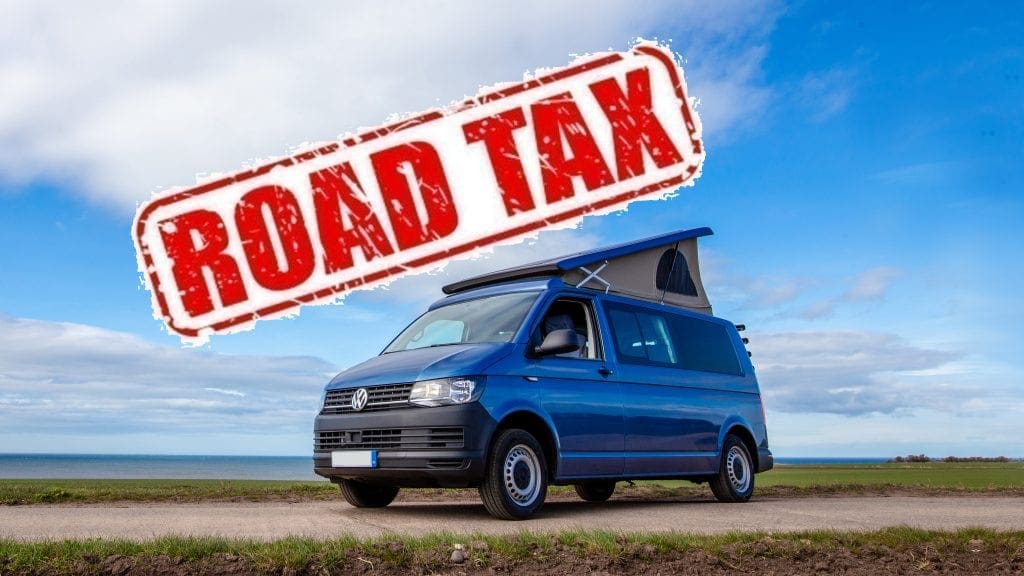On the 1st Sept 2019 the DVLA introduced a new road tax (vehicle excise duty) structure for motorcaravans (campervans & motorhomes) at their first registration. This does not affect any campervans or motorhomes that are already registered and on the road, it’s only applicable for new registrations.
For Type Approval regulatory reasons, up until this date all new campervan conversions, that were built upon a brand new factory built base van (known as multi stage builds), could be registered with the DVLA under the category of Private Light Goods (PLG) – which meant a flat rate road tax charge of £265 per year. However, the recent change now means that from 1st Sept 2019 all new campervans and motorhomes will attract road tax according to their published CO2 emissions – the same system that is used for all passenger cars.
Since 1st Sept 2018 this emissions based road tax structure has applied to campervans and motorhomes that are built entirely in one phase at a base vehicle manufacturer’s factory, such as the Volkswagen California (known as single stage build), so it was inevitable that at some point the campervan conversion market would have to catch up.
The system is based upon the following banding of CO2 emissions by g/km;
| CO2 emissions – g/km | Road Tax cost – for vehicles that meet RDE2 |
| *151 – 170 | £530 |
| 171 – 190 | £855 |
| 191 – 225 | £1280 |
| 226 – 255 | £1815 |
| Over 255 | £2135 |
*please note that there are 8 banding levels at less than 150 g/km, but these are generally all below campervan and motorhome emission levels.
As life is never simple there is also a further charge that is part of the new CO2 emissions structure which applies to all vehicles that have a final list price (of the final campervan/motorhome including the base vehicle and the conversion) of over £40,000. This is an annual fee of £320 and is payable for five years following the first year – this means that from year 2 until year 6 the annual VED charge is now £465 (£320 plus the annual standard charge of £145).
From year 7 onwards, the annual rate does then reduce to £145, but it takes around 20 years (depending upon the road tax band) before it balances out with the cumulative cost of the previous structure which was a straight £265 per year.
There is a further possible future twist to also be aware of for registrations from April 2020 onwards! During 2019 a new test procedure and set of standards have been introduced across the EU known as the Worldwide Harmonised Light Vehicle Test Procedure (WLTP).
WLTP was developed with the aim of being used as a global test cycle across different world regions, so pollutant and CO2 emissions as well as fuel consumption values would be comparable worldwide. However, while the WLTP has a common global ‘core’, the European Union and other regions will apply the test in different ways depending on their road traffic laws and needs. The old lab test – called the New European Driving Cycle (NEDC) – was designed in the 1980s, but due to evolutions in technology and driving conditions, it was judged to have become outdated.
As with NEDC, the new WLTP regulation is still based upon CO2 g/km emissions, but the nub of the issue for road tax appears to be that the emissions result for a vehicle assessed under WLTP is greater than that under the old NEDC regime – sufficiently greater in many cases to move a vehicle up into the next higher road tax bracket.
The government is however phasing in WLTP, so for all campervans and motorhomes first registrations will continue to be allowed to use the current NEDC emission figures until the end of March 2020. After that point though the new WLTP figure must be used.
The WLTP figure will be generated by the original base vehicle manufacturer (so in the case of Jerba Campervans this will be Volkswagen) and will be peculiar to each individual van – not only will it depend upon the base vehicle engine and transmission, but it will also take into account optional extras that add mass or effect engine resistance (such we believe as air conditioning).
But it doesn’t end there! Where a campervan or motorhome converter then takes that base van and undertakes a motorcaravan conversion to it before first registration, the WLTP regulation states that if the converter is certificated to the European level of Type Approval then the effect on the CO2 emission figure of the conversion must also be taken into account, however, it appears at present that if the converter is certificated to the National Small Series level of Type Approval then the effect of the conversion on the CO2 emission figure does not have to be taken into account. In real terms this means that where a converter is certificated to the European level of Type Approval then the vehicle will most likely move up a further level of VED charge banding, but where the converter is certificated to the National Small Series level of Type Approval then the banding will remain as per the published manufacturer’s WLTP figure.
Every base vehicle manufacturer (such as Volkswagen) has had to provide a WLTP certificate system, so all those converters with European Type Approval certification must input the original van data, plus their conversion data, and a new WLTP CO2 g/km emissions figure and certificate will then be produced. It is that final figure that from 1st April 2020 must be used for all motorcaravan first registrations.
Understandably this considerable increase in VED rates has not been welcomed by the campervan and motorhome industry as it could have significant impact on the sales of new vehicles. The National Caravan Council (NCC) is the trade body for the industry and they have undertaken a campaign to try to persuade the government to think again – campervan & motorhome owners generally do not have the option of choosing base vehicles with smaller petrol engines that emit less CO2 and many campervans & motorhomes often travel less than 5000 miles per year which is significantly less than most cars and virtually all commercial vehicles. Read more about the NCC FairTax Campaign.
If you’d like to read about WLTP in more detail and see exactly how this hew test regime has been designed, then just follow the link below;















